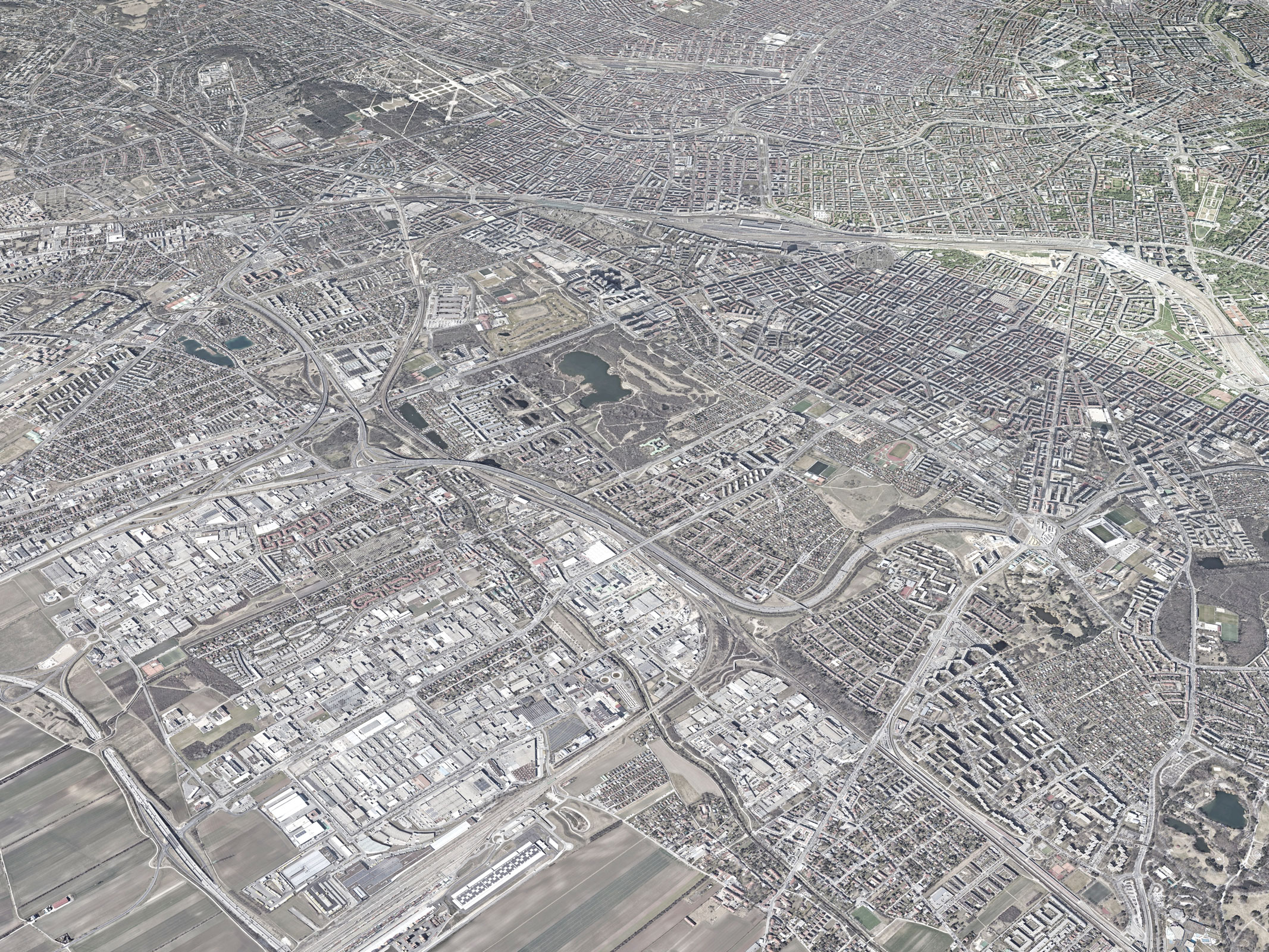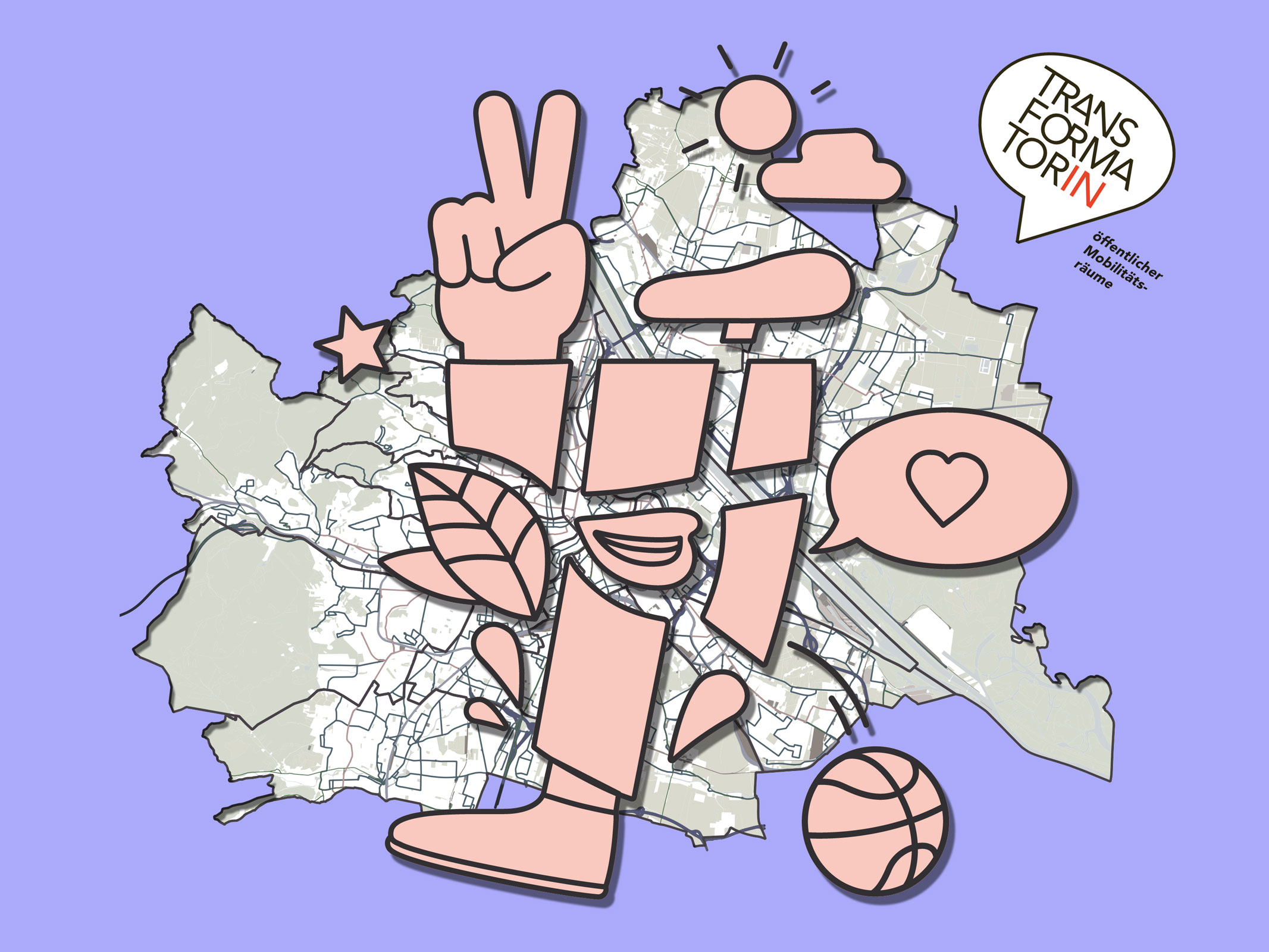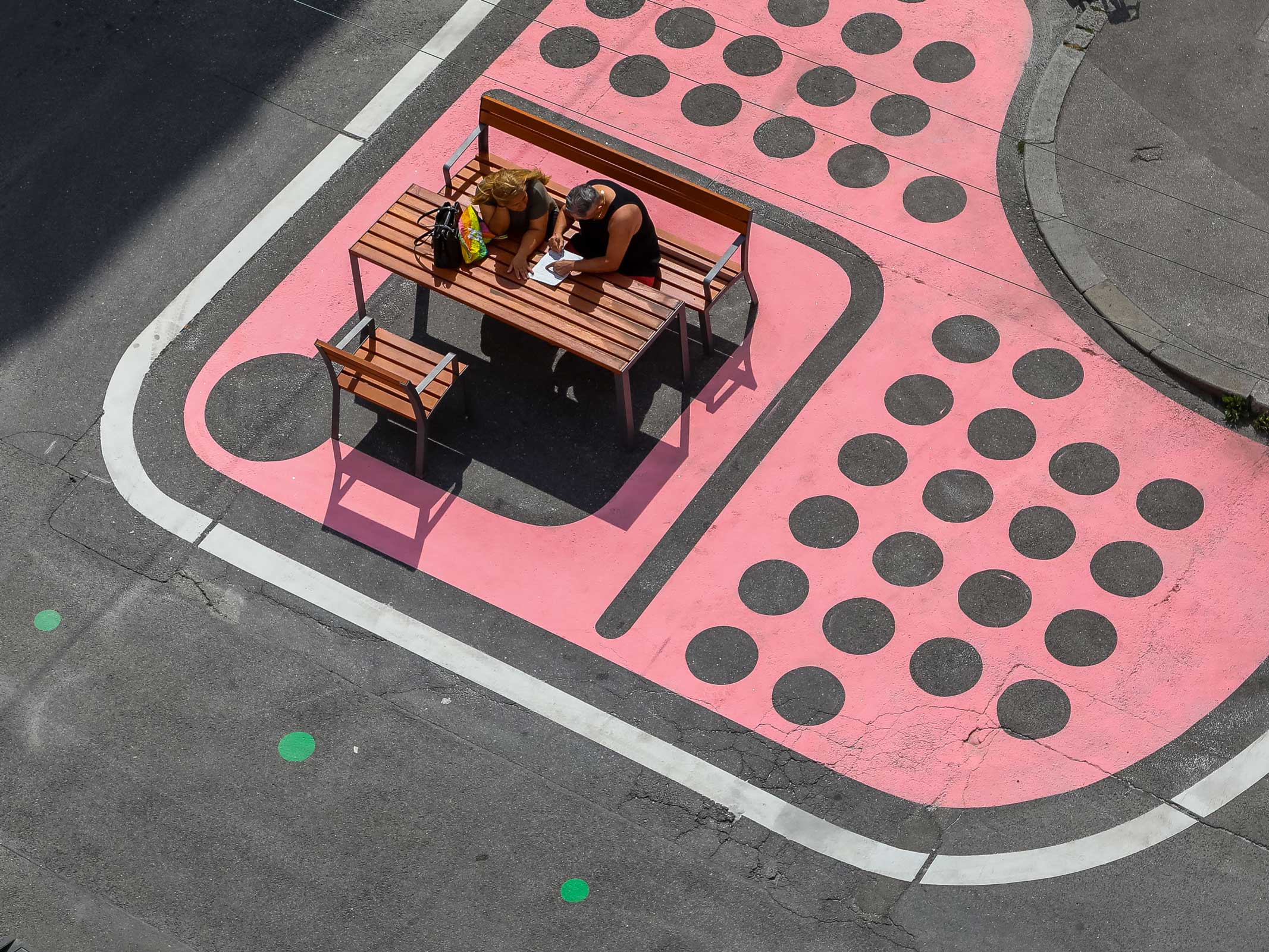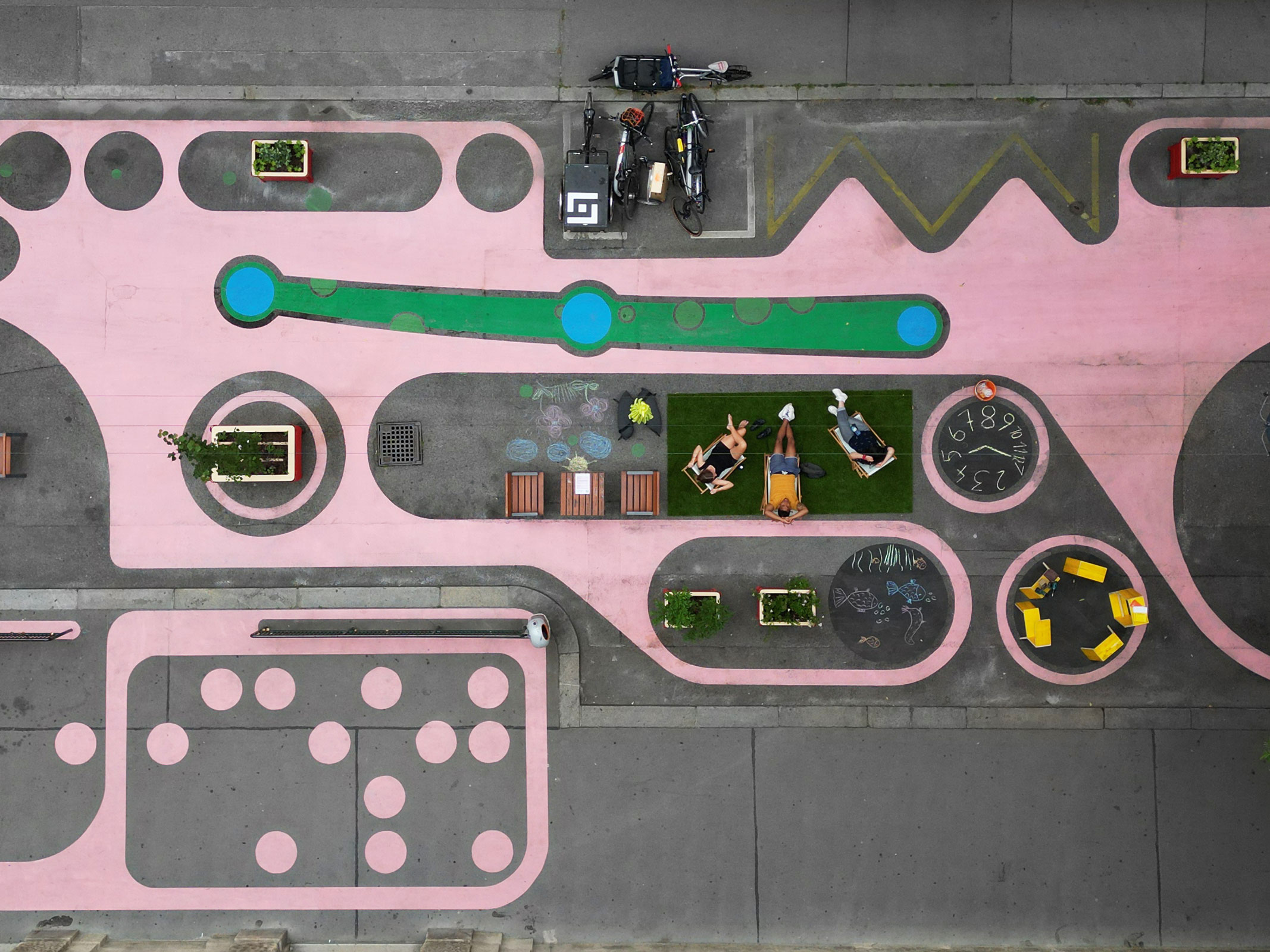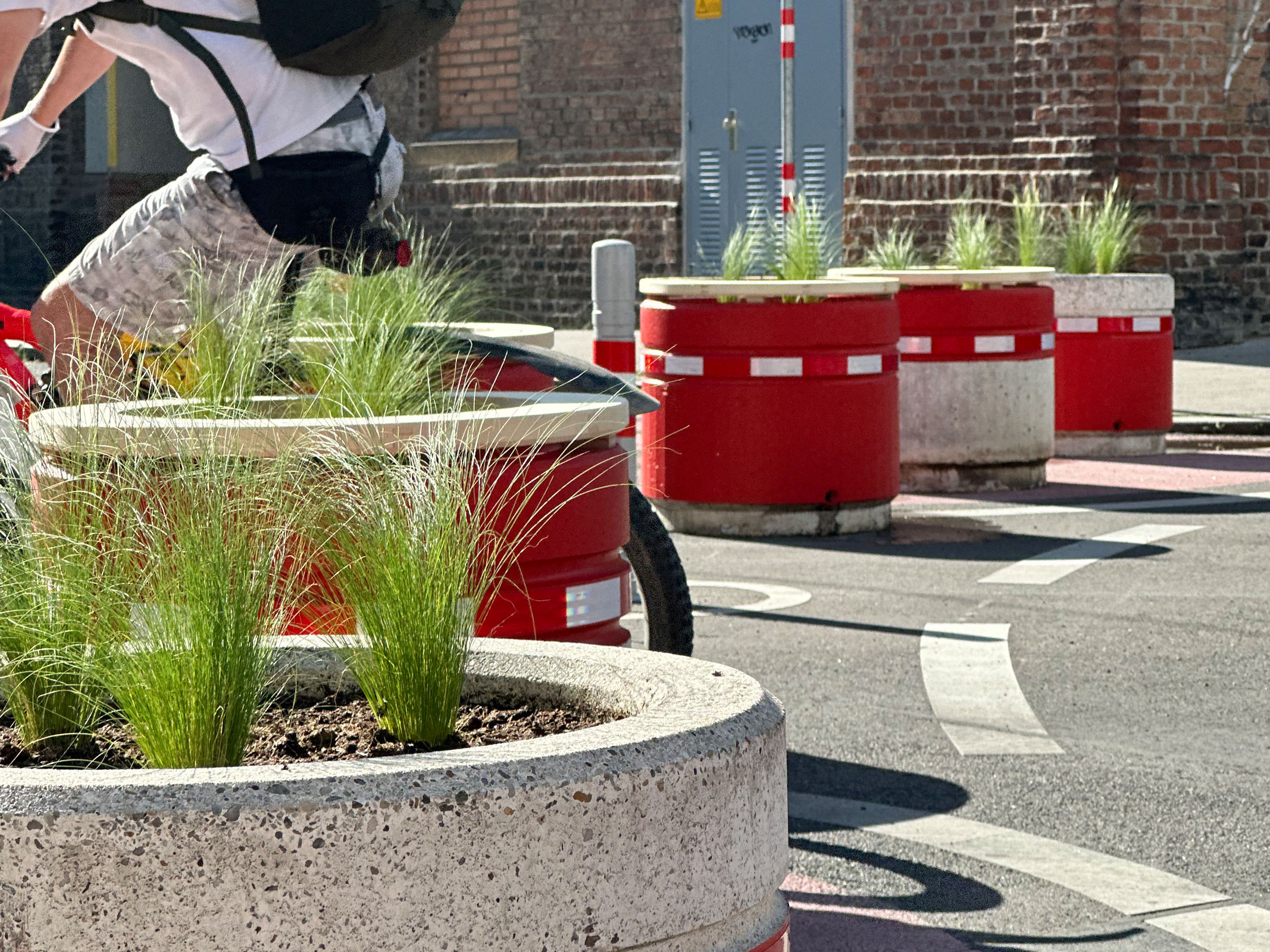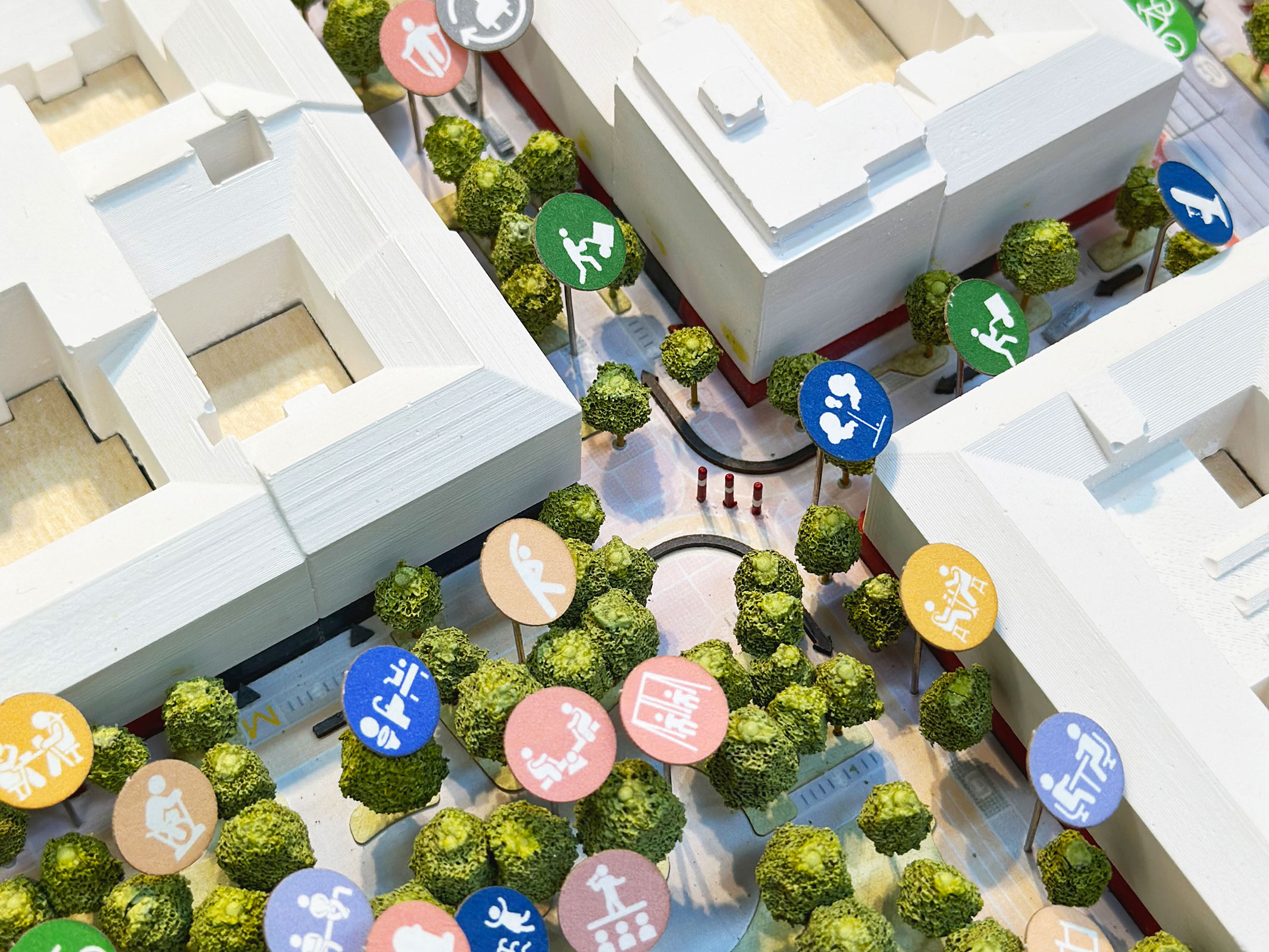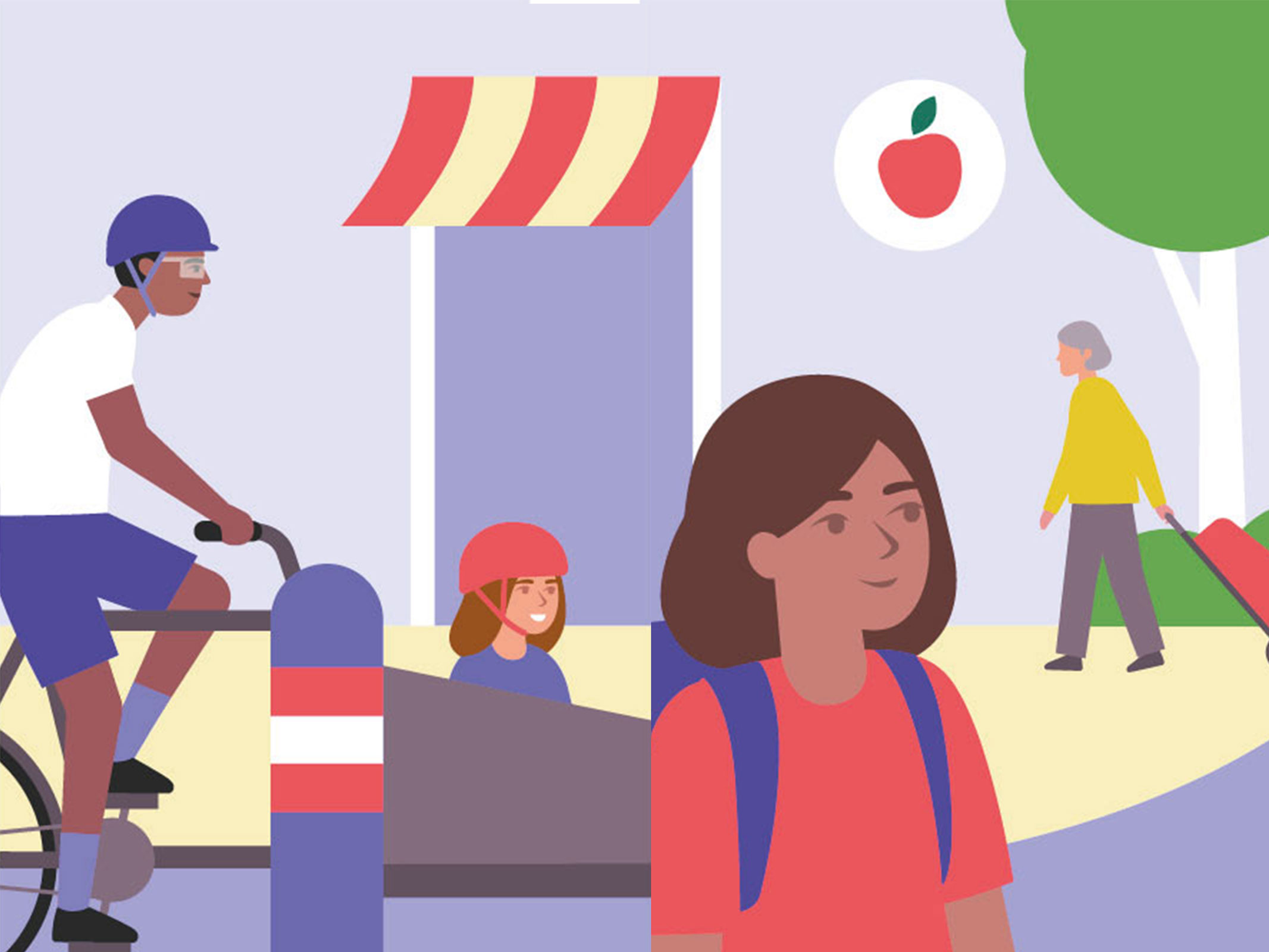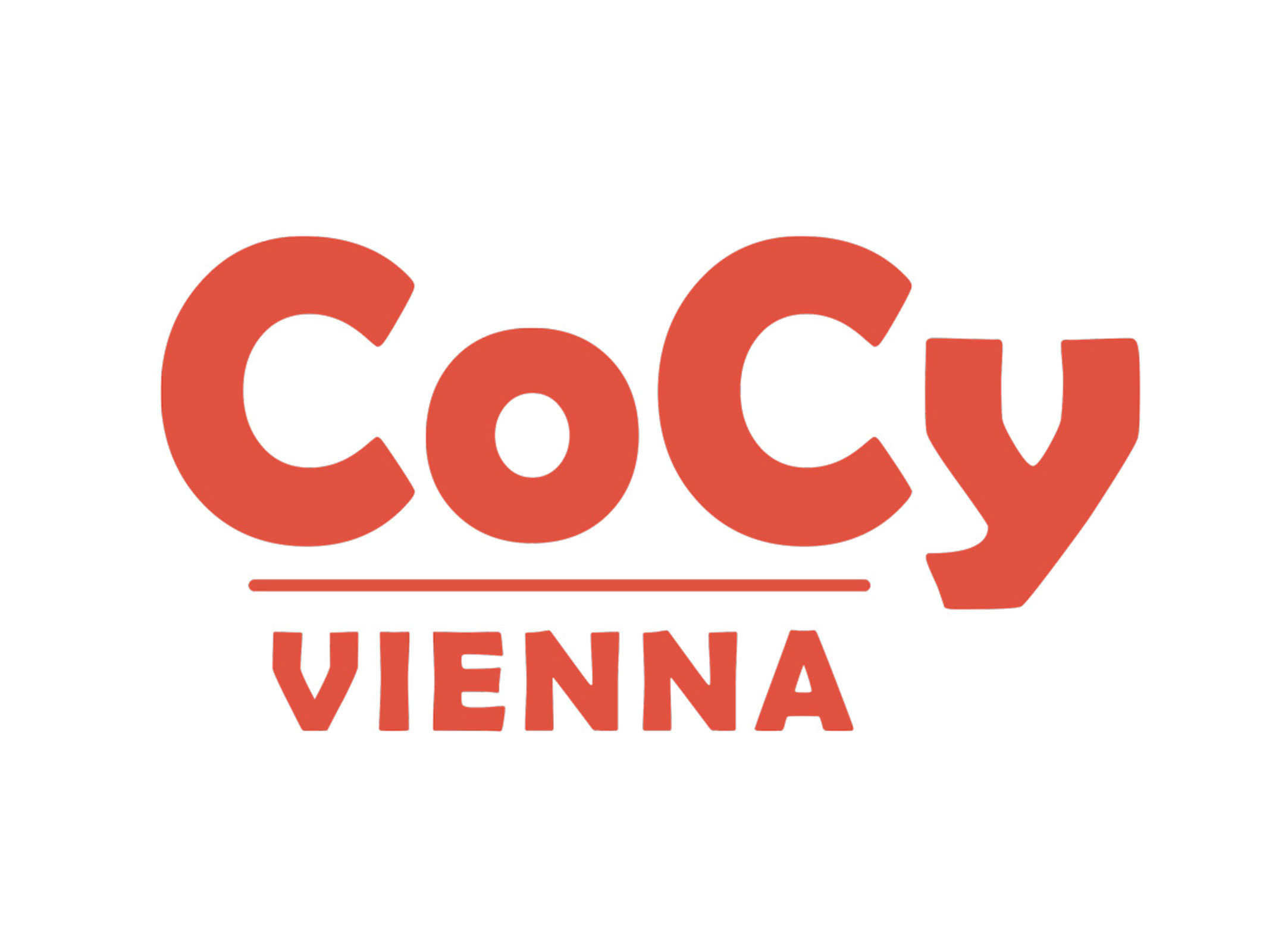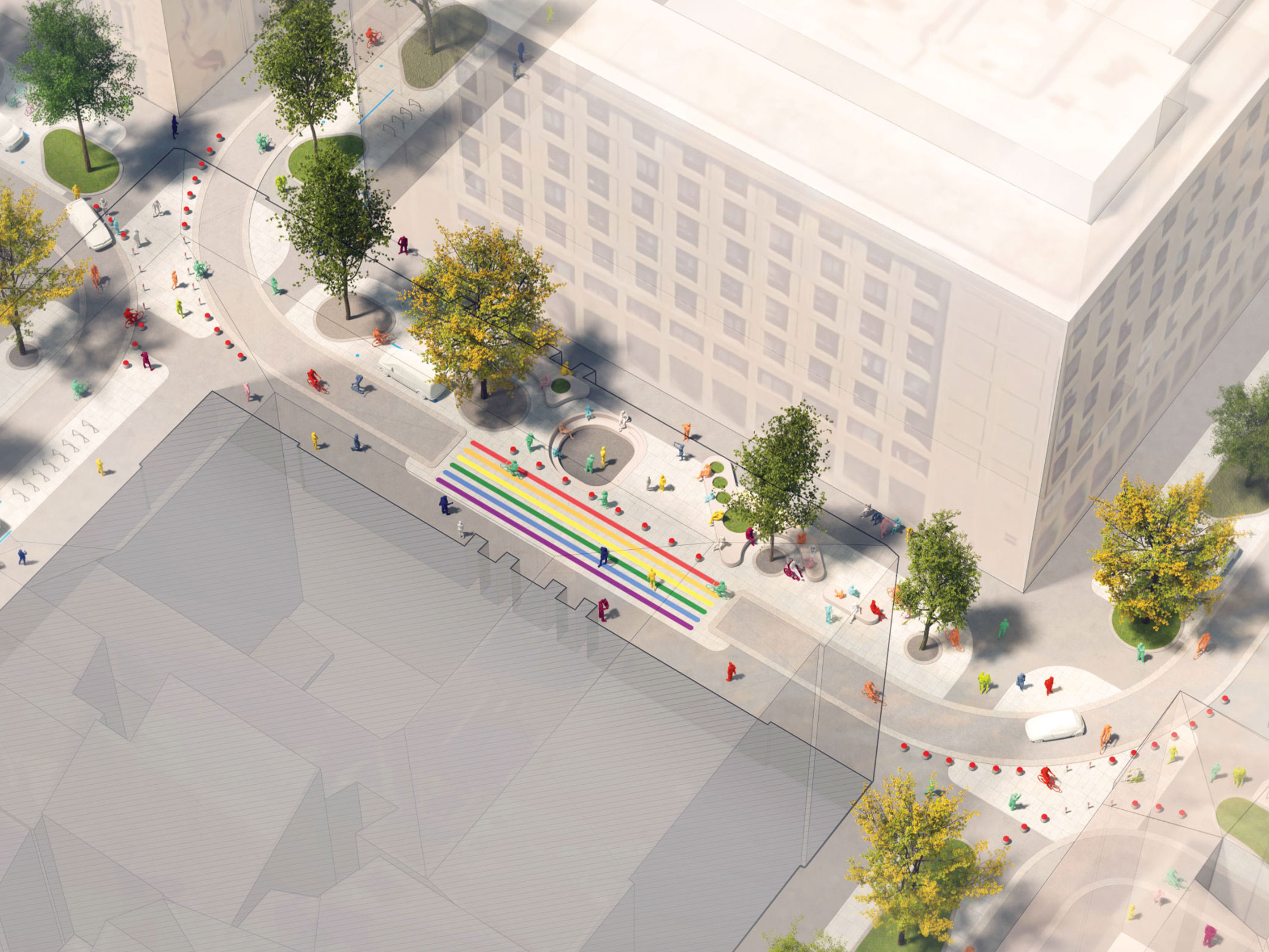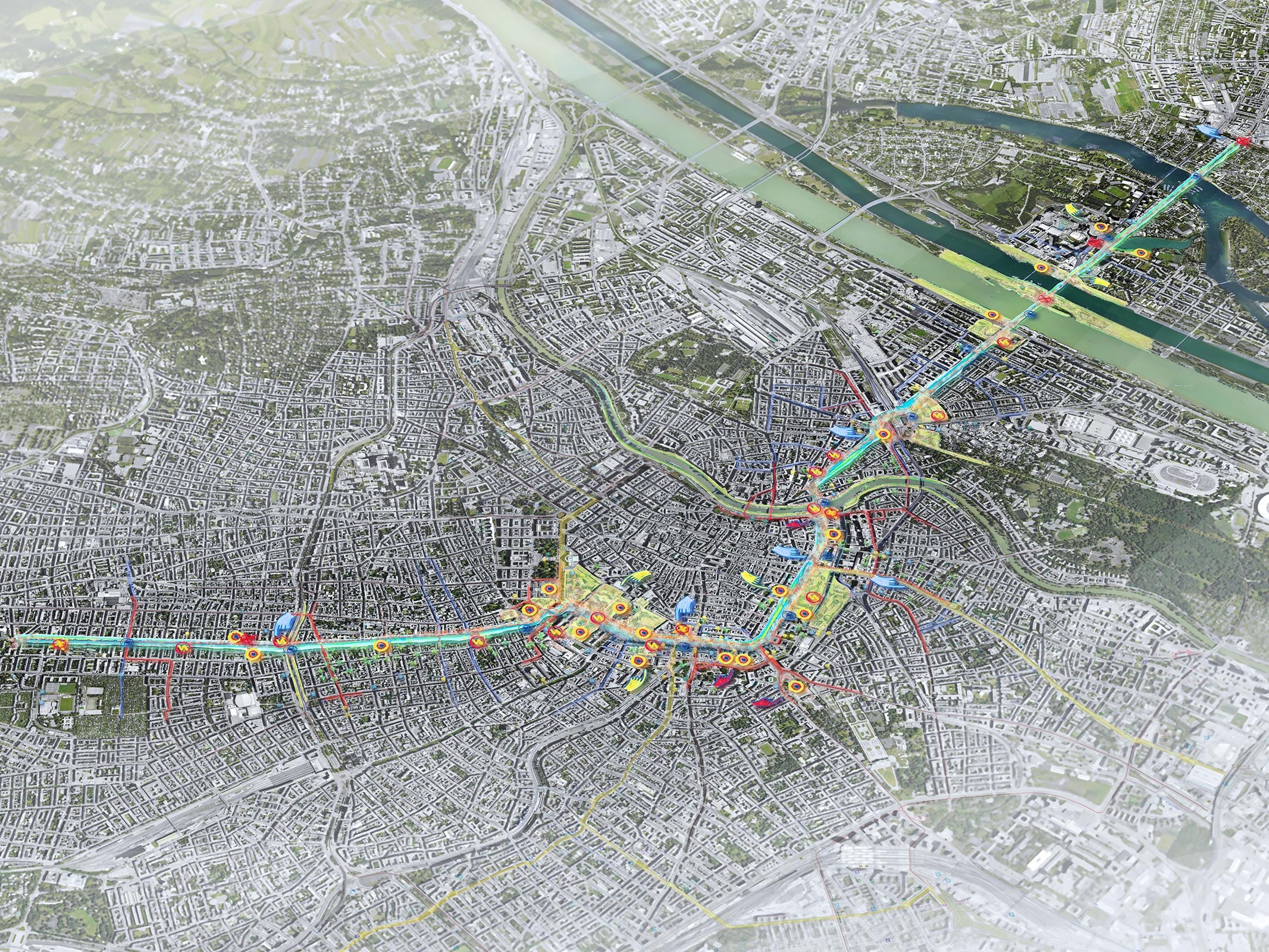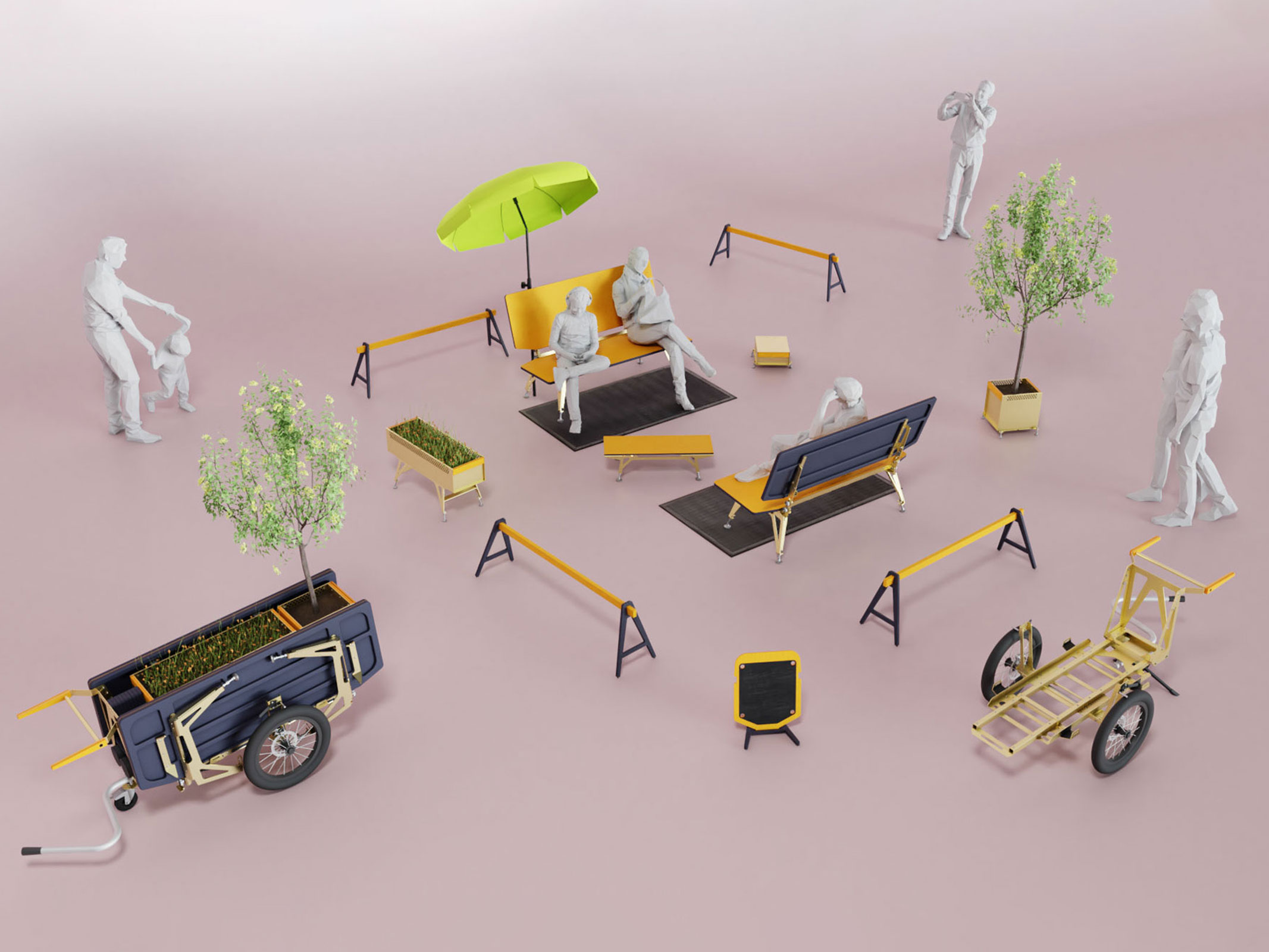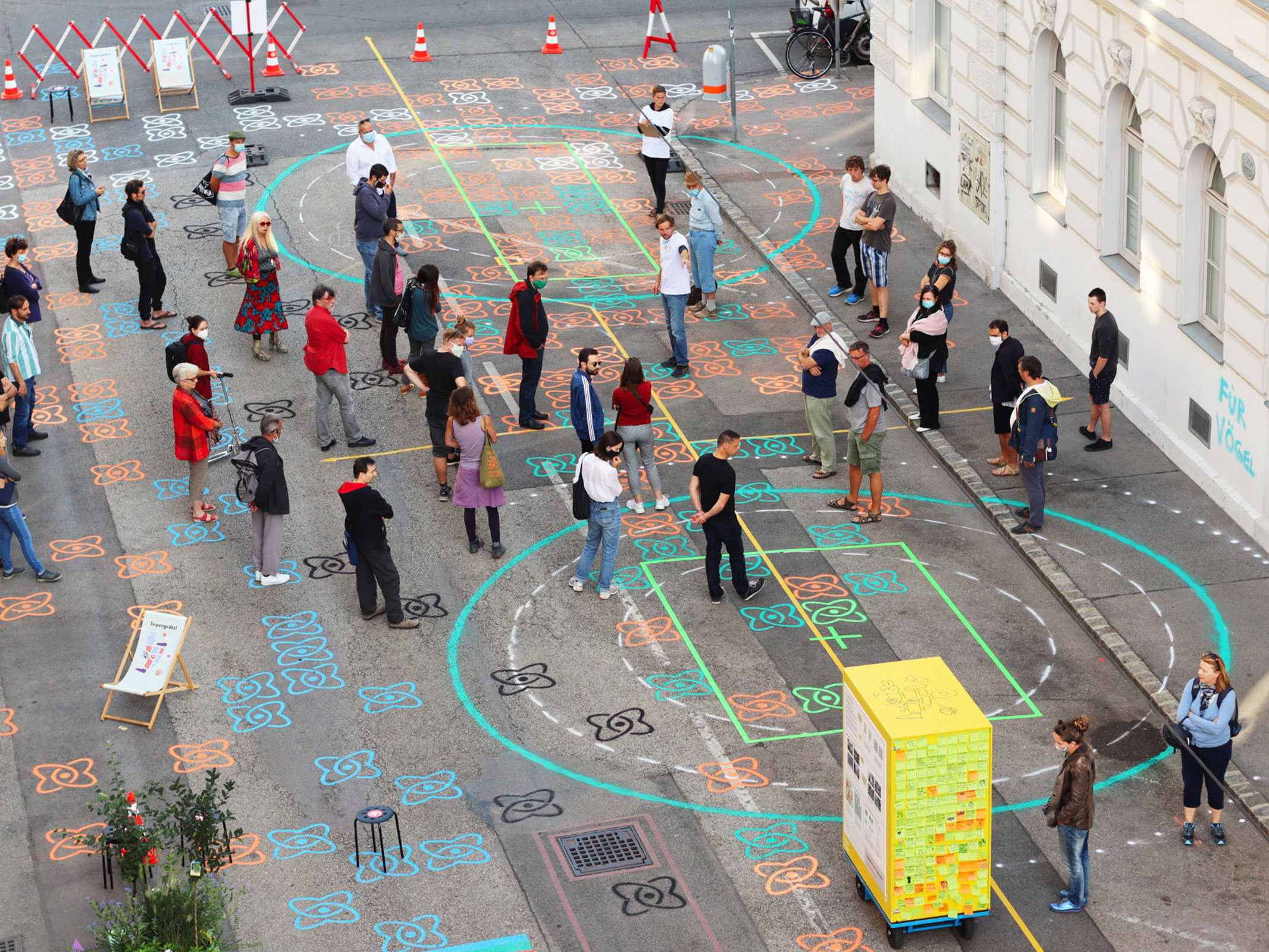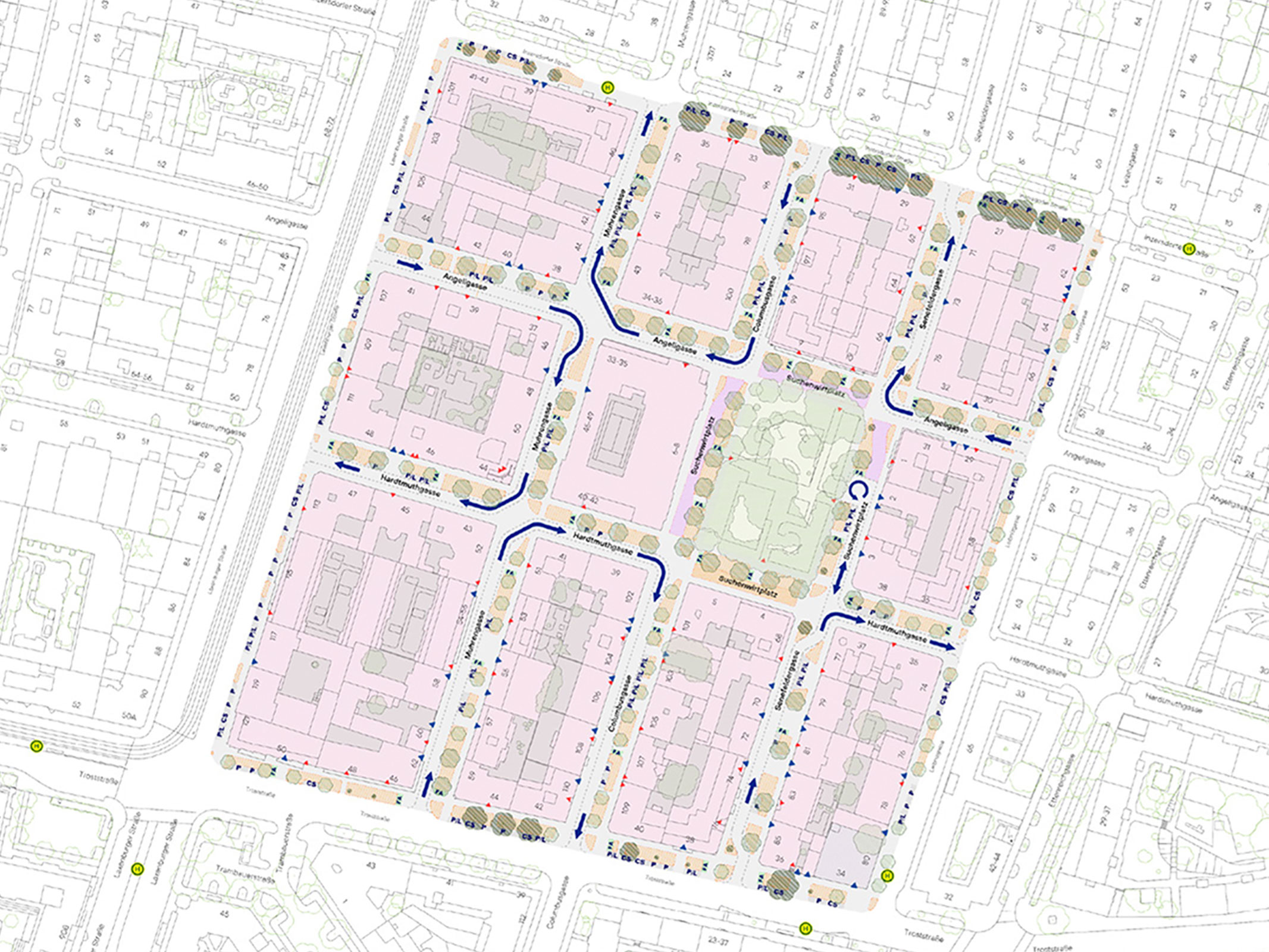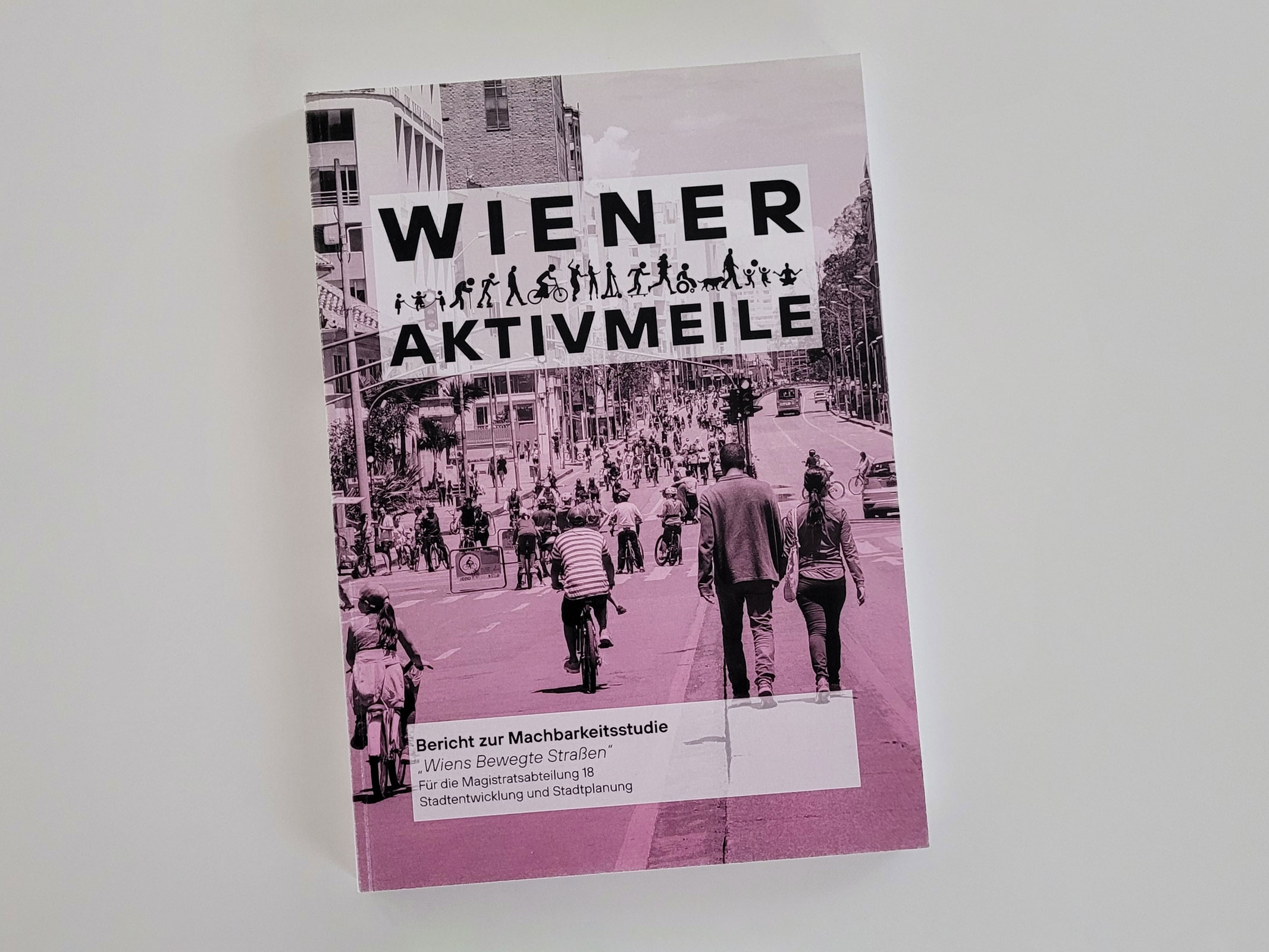A pioneering urban landmark in Vienna, the MeidLine Pedestrian Landscape Bridge merges the boundaries between infrastructure and landscape design, creating a new urban experience while elevating the connection between nature and the built environment. Positioned across a railway corridor, it acts not only as a bridge but also as a floating park joining the city’s natural and architectural elements.
The proposal developed by Entropic (architecture), Degree of Freedom (structural engineering) and LAUT (landscape architecture) was awarded with the third prize at the international two-stage competition "MeidLine - Neubau einer Fußgänger*innenbrücke vom Schedifkaplatz zur Hohenbergstraße in 1120 Wien" .
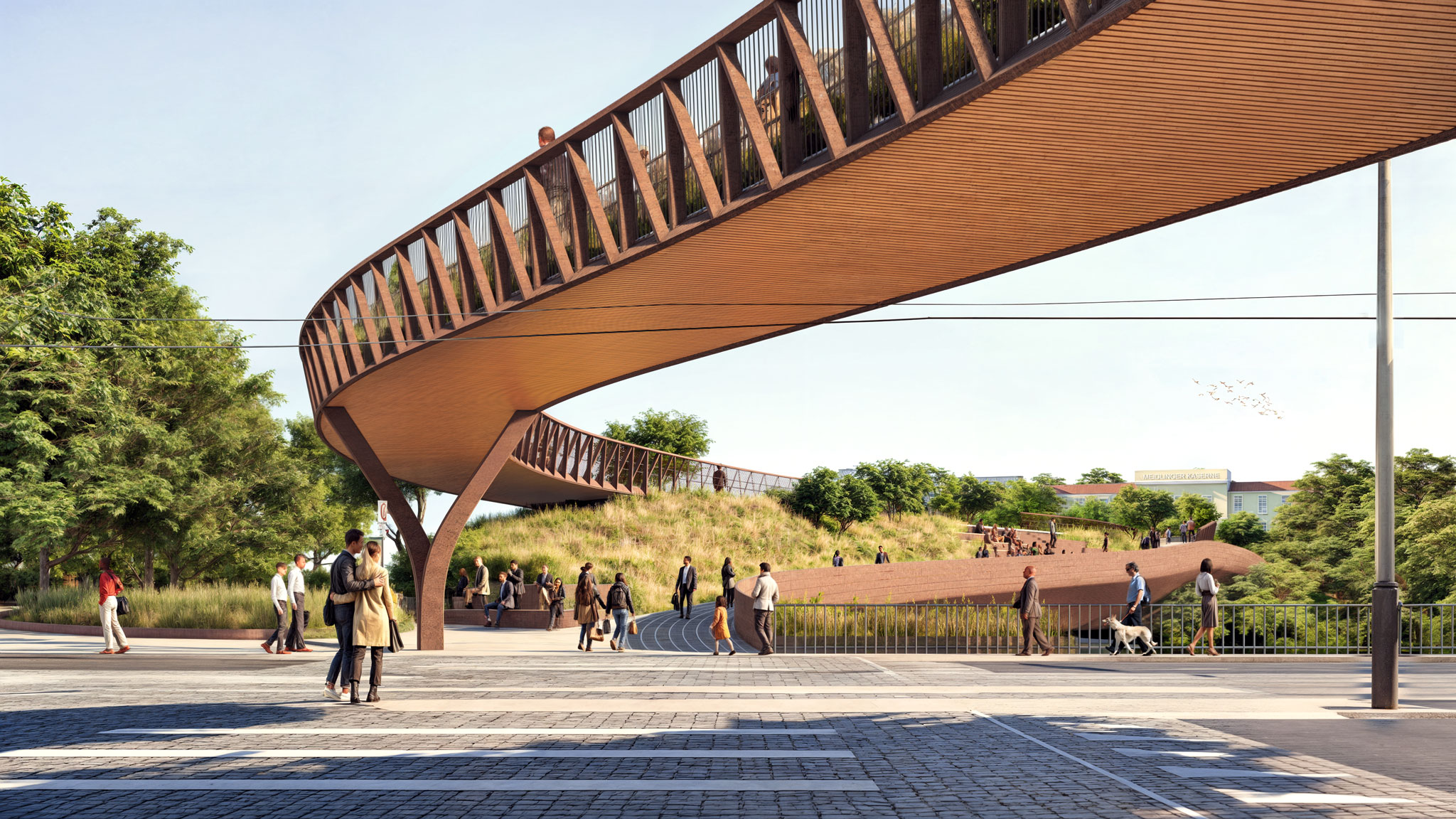
Paths that Connect Us
The design of the MeidLine Bridge envisions a seamless integration of nature, urban infrastructure, and community life, with the structure itself becoming a dynamic part of the surrounding landscape. The bridge is designed with accessibility in mind, allowing for easy movement and flow for pedestrians of all abilities.
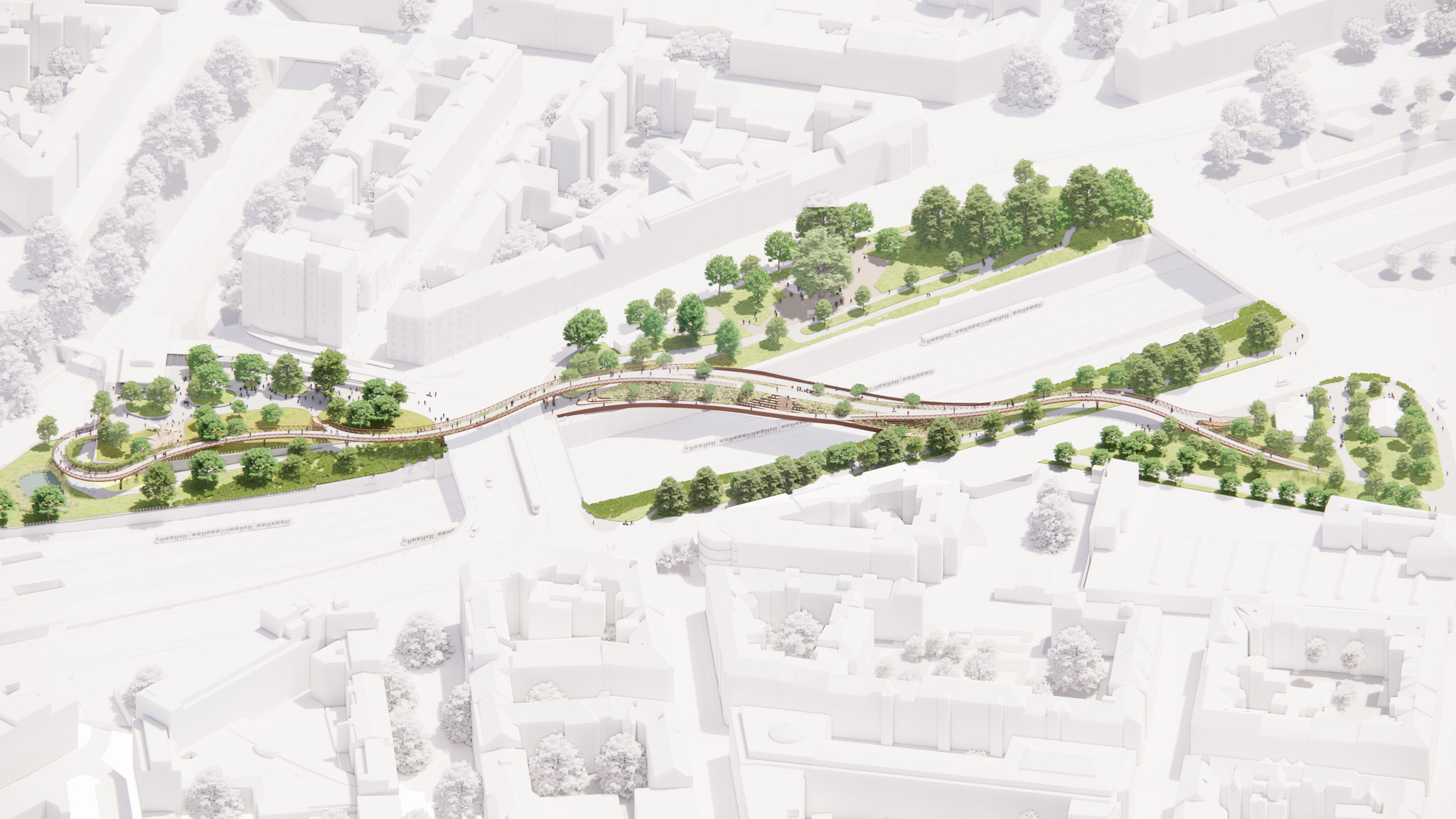
A Floating Urban Park
The bridge creates a continuous green corridor, connecting Schedifkaplatz and Kasernenpark. The bridge’s landscaping strategy, titled Plant Lines, envisions bands of vegetation that gently weave into the city’s fabric. Greenery thrives on the bridge with tall grasses and plants that respond to the wind and seasonal changes, creating a living, organic experience. Above the railway tracks, the newly created public spaces offer a multitude of uses ranging from mobility to leisure.
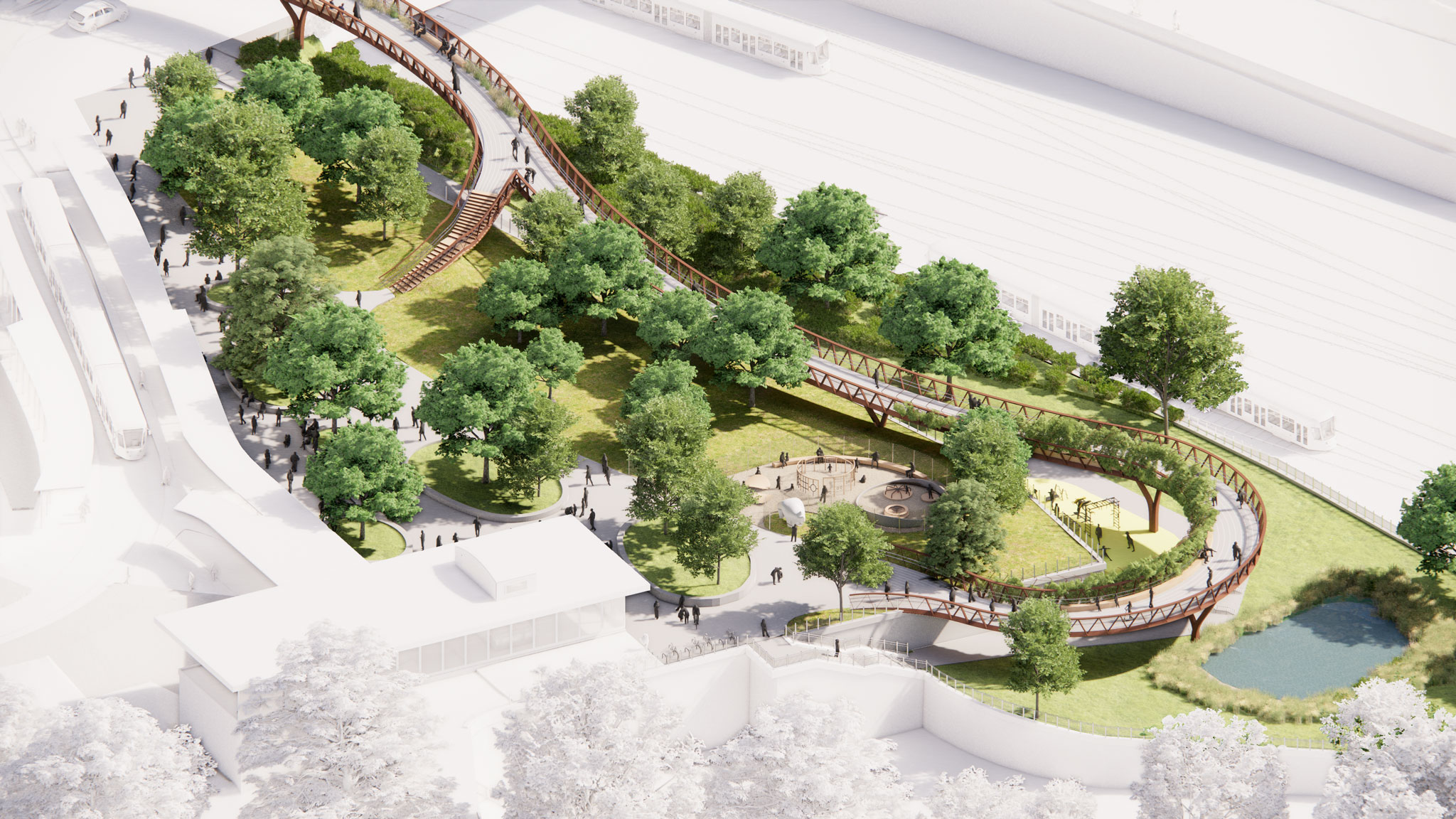
Elevated Connection and Visual Experience
The viewpoints on the bridge offer users a chance to experience the city from unique vantage points, blending the urban grid with the natural landscape. They enhance the idea of a bridge as a destination, inviting individuals to pause, reflect, and immerse themselves in the city’s atmosphere.

Interactive Public Spaces
Strategically-placed seating curves and shaded zones encourage both relaxation and social interaction. The inclusion of inviting elements such as viewpoints elevates the pedestrian experience by allowing visitors to enjoy 360° views of Vienna’s architectural and natural landmarks. Additionally, the bridge incorporates multiple uses - public transport hub, water park, urban playground, fitness spaces, dog zones, wildlife areas - making the MeidLines bridge a multifaceted urban hub.
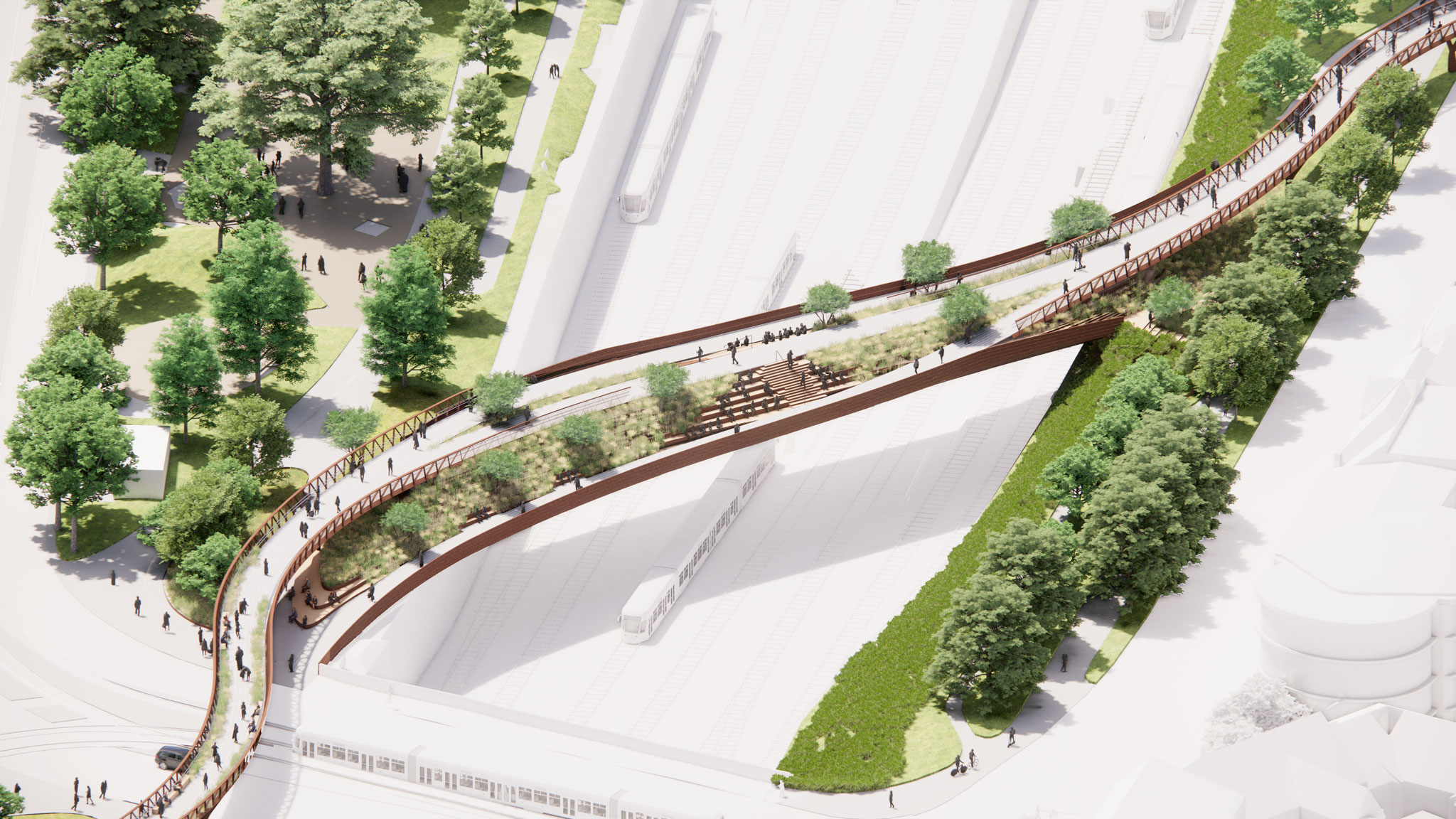
Sustainable Planting Concept
The plantings are carefully chosen for their drought tolerance and wind resistance, ensuring minimal maintenance and long-term sustainability. Hardened species for urban conditions, such as Persian Ironwood (Parrotia persica) or Goldenrain Tree (Koelreuteria paniculata), are used to enhance ecological value while creating an aesthetically pleasing, low-maintenance green space. Rainwater is collected locally by an integrated water retention system to buffer excess water in case of heavy rainfall as well as providing locally circulated water for irrigation.

Technical Description
The technical execution of the MeidLines Bridge presents a sophisticated and resilient structure that not only fulfills its primary function as a pedestrian crossing but also addresses the site’s specific challenges and environmental considerations.

Structural System
The bridge spans 350 meters over the parks in the area and across the railway corridor with handrail trusses in the approach spans and a large trapezoidal truss concealed beneath the surface in the stretch across the railway. This allows the vegetation to take center stage on the landscape bridge. Corten steel was selected for the bridge’s structural surfaces due to its durability and natural weathering properties, and blends seamlessly with the surrounding industrial landscape while avoiding difficult maintenance in the tracks area.
Landscape Integration
Plant Lines, the bridge’s landscaping strategy, introduces a diverse mix of native grasses, perennials, and ecological elements to create a diverse, low-maintenance, urban garden with intricate ecological aspects and value. This allows the bridge to act as an urban ecosystem in the heart of the city. The elevated nature of the bridge sets the perfect stage for this integration, combining functionality with natural elements to be enjoyed by the users.
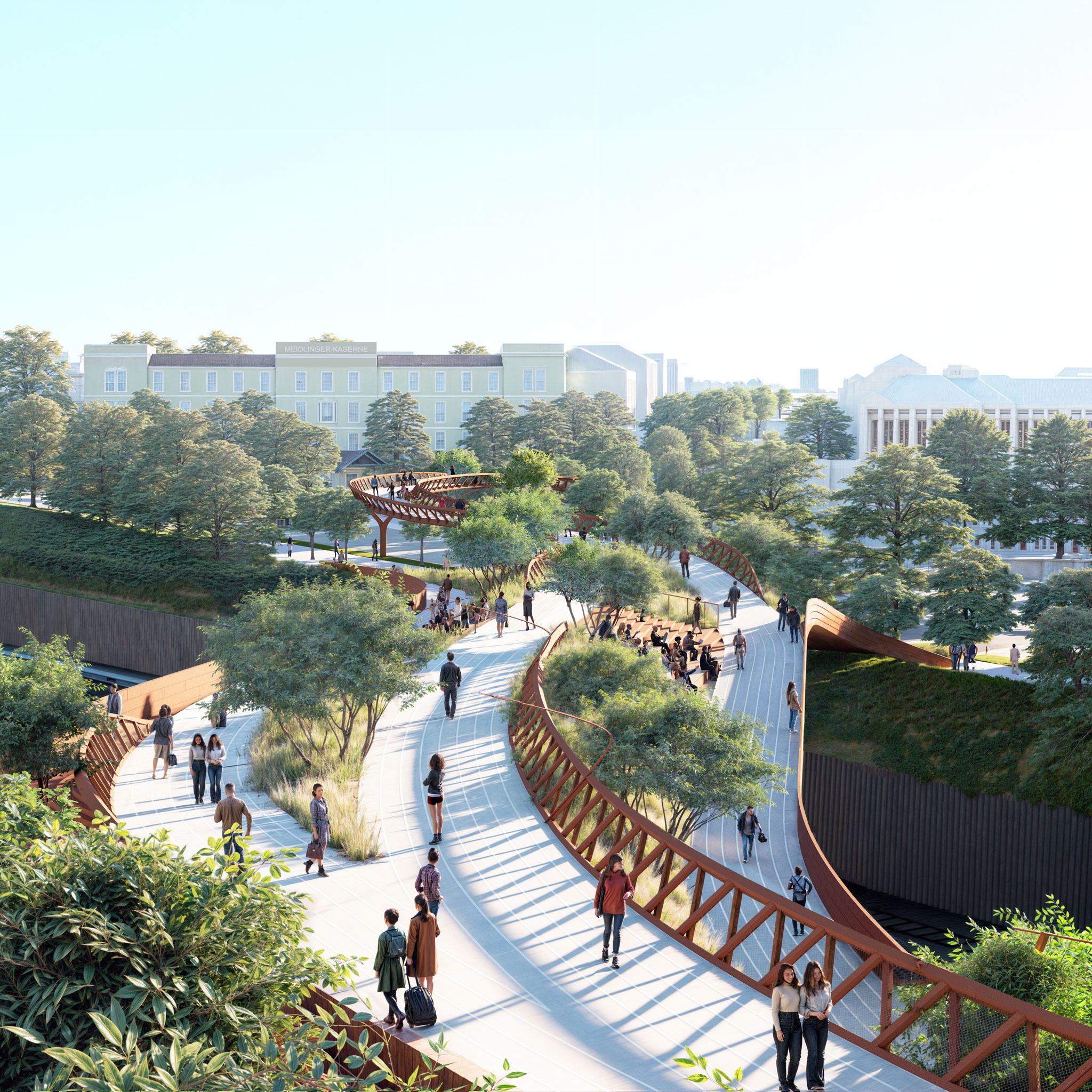
Resistant Materials, Smart Lighting, and Wildlife-respectful Solutions
Smart bridge design and material use (like Corten steel) ensures a longer lifespan and minimal maintenance. The bridge is equipped with solar-powered LED lighting thatresponds to the time of day and number of visitors, creating an immersive energy-efficient lighting atmosphere that adapts to user behavior. The design also incorporates features to enhance local climate resilience, such as rainwater collection systems to support plant life with minimal irrigation.
Urban Connectivity and Flow (Technical Integration)
The MeidLine Bridge significantly enhances urban connectivity by linking four green spaces, transforming a once-disjointed urban fabric into a cohesive system of parks and recreational spaces. It promotes both public transport and active mobility. By providing a new and important pedestrian route it works synergistically with nearby public transport hubs. With its integrated spaces, the bridge encourages movement and interaction. This design feature supports the city’s green infrastructure by ensuring easy flow for users while facilitating access between parks and other important urban zones.
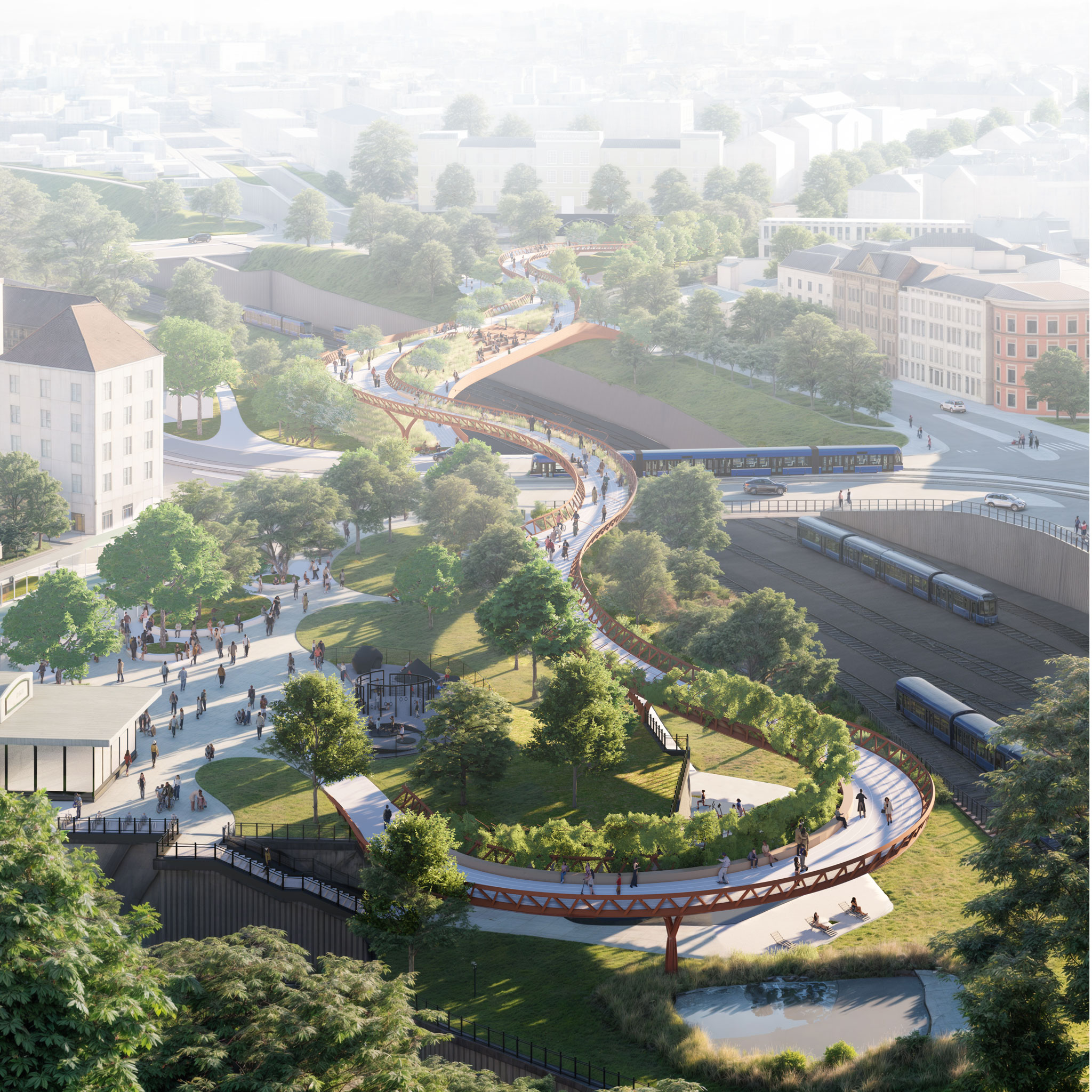
Location: Vienna
Client: City of Vienna - District Planning and Land Use Central-Southwest (MA21A)
Year: 2024
Project Type: Landscape Architecture, Urban Planning, Urban Design
Scale: district
Status: competition entry (3rd prize)
Team: Florian Lorenz, Georg Wieser, Francesco Remonato
Collaborators: Entropic, Degree of Freedom


